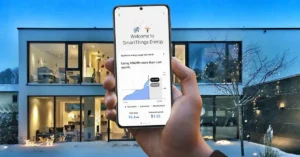Introduction: More Than Just Aesthetic Improvements
For homeowners in 2025, remodeling is no longer just about updating a kitchen or fixing an old roof; it’s about boosting property value, improving energy efficiency, and aligning upgrades with insurance coverage.
From replacing a worn-out roof to installing energy-efficient windows, smart upgrades can reduce risks, qualify for insurance discounts, and even help homeowners access tax rebates. At the same time, the right remodel increases resale value and makes a home more resilient against storms, fires, and daily wear.
What Is Home Remodeling? (Quick Answer)
Home remodeling and upgrades refer to improvements made to a house to increase functionality, safety, efficiency, or value.
These can range from cosmetic updates like flooring and paint to major projects such as:
- Roof replacement for durability and storm protection.
- Energy-efficient windows and doors to cut utility bills.
- Kitchen and bathroom renovations for modern comfort.
- Eco-friendly upgrades like solar panels or green materials.
Why Remodeling Matters for Homeowners in 2025
Home upgrades impact more than just how a house looks. They directly influence:
- Insurance premiums: A new roof or upgraded electrical system lowers risk.
- Energy efficiency: Smart HVAC systems and windows reduce bills.
- Safety: Stronger doors and siding protect against break-ins and storms.
- Property value: Remodeling can increase resale value by 10–30%.
- Comfort & lifestyle: Modern layouts and smart features improve daily living.
According to the Joint Center for Housing Studies at Harvard, U.S. homeowners spent over $500 billion on remodeling projects in 2024, a number expected to grow in 2025.
Average Costs of Common Remodeling Projects
| Upgrade | Average Cost (2025) | Potential ROI | Insurance Impact |
| Roof Replacement | $9,000–$14,000 | 60–70% | Lower storm/flood risk → premium discounts |
| Windows & Doors | $6,000–$12,000 | 65–75% | Discounts for hurricane/impact resistance |
| Kitchen Remodel | $15,000–$40,000 | 55–65% | Limited coverage benefits |
| Bathroom Remodel | $10,000–$25,000 | 55–60% | Limited coverage benefits |
| Energy-Efficient Upgrades (HVAC, Insulation, Solar) | $8,000–$30,000 | 50–80% | Premium discounts + tax incentives |
Insurance Coverage and Remodeling
Remodeling projects often impact homeowners’ insurance.
- Roofing: New roofs reduce the risk of leaks and storm damage, lowering premiums.
- Electrical & Plumbing: Updating outdated systems reduces fire or water risk.
- Windows & Doors: Storm-resistant models may qualify for insurer discounts.
- Kitchens & Bathrooms: While they boost value, they don’t always lower premiums, but increase replacement cost coverage needs.
Important: Always notify your insurer after a major remodel; failure to update your policy may leave you underinsured.
DIY vs Hiring Contractors
Not all upgrades should be tackled as DIY projects. While painting or flooring might be simple, larger projects carry risks.
| Task | DIY Feasibility | Risks | When to Hire a Contractor |
| Painting, flooring | High | Minor mistakes, time | If the scale is large |
| Kitchen remodel | Low | Plumbing, electrical risks | Always |
| Roof replacement | Very Low | Safety, insurance voided | Always |
| Windows/doors install | Medium | Poor insulation, safety risks | Storm-rated windows |
| Electrical upgrades | Very Low | Fire hazard, code violations | Always |
DIY saves money but can void warranties or even impact insurance coverage if not done to code.
Energy Efficiency: Remodeling with Long-Term Value
Eco-friendly and energy-efficient upgrades are trending in 2025. Homeowners benefit from:
- Tax credits: Solar panels, efficient HVAC, and insulation qualify for federal rebates.
- Lower bills: Smart thermostats and upgraded HVAC cut energy costs by up to 30%.
- Insurance discounts: Insurers reward upgrades that reduce fire, flood, or storm risks.
- Resale appeal: Buyers increasingly prefer green-certified homes.
Example: Installing solar panels for $15,000 could reduce utility bills by $1,500 annually, meaning the system pays for itself in 10 years, with insurance discounts and tax credits speeding up ROI.
Real-World Examples
- Roof Upgrade in Florida: A homeowner replaced an aging roof with hurricane-rated shingles. Premiums dropped by 12%, saving $400 annually.
- Energy Windows in Texas: New storm-resistant windows cut energy bills by 20% and qualify for a $1,200 tax rebate.
- Bathroom Remodel in California: While it didn’t lower insurance, it increased home resale value by 15%.
Challenges of Remodeling
- Upfront costs: Major upgrades require significant investment.
- Permit & code compliance: Failure to meet codes can affect insurance claims.
- Disruption: Remodeling often takes weeks or months.
- Scope creep: Costs can rise if plans change mid-project.
- Insurance adjustment: Premiums may increase if home value rises substantially.
Tips for Successful Home Upgrades in 2025
- Prioritize safety-related projects first (roof, electrical, plumbing).
- Check insurance coverage before starting a remodel.
- Get multiple contractor quotes to avoid overpaying.
- Combine upgrades with rebates (energy credits, insurer discounts).
- Plan for resale value, focus on kitchens, baths, and curb appeal.
Key Takeaways
- Remodeling impacts safety, value, energy costs, and insurance coverage.
- Smart upgrades like roofs, windows, and HVAC pay off in savings and protection.
- DIY works for small projects, but contractors are best for structural or high-risk upgrades.
- Insurance companies reward risk-reducing remodels with premium discounts.
Energy-efficient upgrades bring triple benefits: lower bills, tax credits, and resale appeal.




